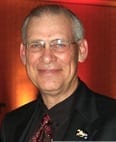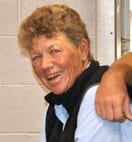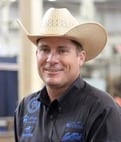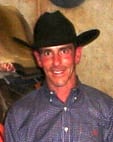As a hunter under saddle exhibitor, I have noticed a lot of industry chatter questioning how our hunter under saddle horses are to be presented in the show pen. Trainers and exhibitors are asking for clarification on how the horses are judged. What is an acceptable headset? Are their headsets too high; too low? Are they traveling too fast or too slow? Do all horses need to be 16.2H or taller to be competitive? Should we be emulating the guidelines for other associations that focus specifically on hunters and jumpers? In the end, are we giving in to the fact that we are really riding Wenglish horses (Western + English=Wenglish)?
In order to help de-mystify many of these misconceptions, I contacted some of the industry’s leaders to help bring clarity to these questions. My first stop was with AQHA Senior Director of Judges, Alex Ross who prefaced this discussion by addressing the purpose of the modern-day hunter under saddle class and how it was developed.
According to Ross, an English Task force was organized in 2009 consisting of leading exhibitors (open and amateur) as well as owners and breeders of hunter under saddle horses. A sub-committee was formed to develop a purpose for every English class. In hunter under saddle, the purpose is as follows:
466B. (a) The purpose of the hunter under saddle horse is to present or exhibit a horse with a bright, alert expression, whose gaits show potential of being a working hunter. Therefore, its gait must be free-flowing, ground covering and athletic.
 For some, creating a “purpose” in the rule book has seemingly added to the confusion through the introduction of the simple term “Working Hunter.” Getting right to the point, Mr. Ross clarified that while the Task Force felt that the horse’s way of going should simulate that of a working hunter, he believes our industry recognizes that horses shown in AQHA competition will be slightly different than a typical working hunter horse. Simply stated, “We are looking for our hunter under saddle horses to demonstrate the characteristics listed in the rules for a working hunter, i.e., long, low strides, reaching forward with ease, and lengthening instead of “quickening” strides for proper cadence,” Ross said. (pictured left)
For some, creating a “purpose” in the rule book has seemingly added to the confusion through the introduction of the simple term “Working Hunter.” Getting right to the point, Mr. Ross clarified that while the Task Force felt that the horse’s way of going should simulate that of a working hunter, he believes our industry recognizes that horses shown in AQHA competition will be slightly different than a typical working hunter horse. Simply stated, “We are looking for our hunter under saddle horses to demonstrate the characteristics listed in the rules for a working hunter, i.e., long, low strides, reaching forward with ease, and lengthening instead of “quickening” strides for proper cadence,” Ross said. (pictured left)
Head carriage is another topic of discussion in our industry to which Mr. Ross directed that, “There are parameters set in the rule book addressing this matter.” (The rulebook states that, “the poll should be level with, or slightly above the withers to allow proper impulsion”). However Ross adds, “Extremes in either direction should be penalized.” He adds that he believes that, “The majority of judges can recognize the positive characteristics we should reward in a hunter under saddle class.”
In addition to Mr. Ross’ clarifications, I spoke with industry leaders who weighed in on the subject of hunter under saddle. All concurred on most of the same matters of importance, namely form to function movement is the key to a successful hunter under saddle horse.
 Sandy Vaughn: Multiple Congress and World Champion Exhibitor and Trainer
Sandy Vaughn: Multiple Congress and World Champion Exhibitor and Trainer
”The process starts with the exhibitor as the judges can only judge what is being put in front of them. We have come a long way, but we have a ways to go (not a long way).
Movement: The industry needs to be committed to showing horses more naturally with the emphasis on movement. “If a horse is a good mover and is properly engaged they will be rewarded in a class regardless of the horse’s size,” Vaughn says.
Head Carriage/Expression: Vaughn doesn’t believe that there can necessarily be an “exact rule” on head carriage and expression because it is “form to function.” However, she feels that the tip of the ear should not be below the wither.
Additional Points of interest: After movement, head carriage and expression, Vaughn believes that many other things can be forgiven. Size should not be a factor as long as the horse is free moving. For many horses, it is still difficult for some to make the transition of lifting its shoulders when starting to jump.
 Charlie Cole: AQHA Judge, Trainer of World Champions in Multiple Disciplines
Charlie Cole: AQHA Judge, Trainer of World Champions in Multiple Disciplines
“We need to stop comparing our horses to other memberships or associations,” Cole insists. “Quarter Horses are a breed which is the most versatile and trainable horse in the world. I am tired of hearing that our horses should go like horses in other organizations. We have a higher expectation for obedience than most. I have sent many horses to show on Hunter/Jumper circuits and the regular feedback I get is that they are amazed at their level of training and ease to ride.”
Movement – Cole always looks at this first followed by the horse’s way of going and expression. “I look for a free flowing trot with a canter that is true and moving forward where the horse looks balanced and happy.”
Headset: “Some horses look better nosed out; some above level, others slightly below level. I’ve felt for years that the rulebook should be changed to say, ‘Tip of the ears should be no lower than the withers.’ Maybe that will be my new mission.”
Additional Points: Cole believes that, “The canter has improved tremendously. In the 90’s, it seemed like if they could trot and were 16.2 or bigger, they would win the class. Many of these horses were poor movers and not nice horses. In the 2000’s, many of our top hunt seat horses were also our top hunter horses. I believe this is still the case, but unfortunately our hunter division has become very small and there isn’t support. Jumping is great for mind and body!”
 Brent Tincher: AQHA Judge, and Trainer of multiple World Champion Hunter Under Saddle Horses
Brent Tincher: AQHA Judge, and Trainer of multiple World Champion Hunter Under Saddle Horses
”I enjoy seeing a horse shown in a natural free moving 12’ stride at the canter in hunter under saddle by lengthening; not changing speed. I like a horse to swing its leg and have enough step to potentially get over a fence, and make the distances in between,” Tincher says. He also believes it is hard for a true hunter under saddle horses to cross over and make a great equitation horse because of the shortening of stride.
Movement: “This is most important.”
Head Set: Like Vaughn, Tincher has a problem with defining the rule because he feels the head set should be “conformation based.”
Additional comments: Tincher does not believe in calling for an extension at the canter, or a hand gallop. “Horses should already be going forward naturally.”
 Scott DeHelian: “R” USEF Judge and “A” Circuit Competitor and Trainer. AQHA Special Event Judge with Multiple Top Ten Placings at the All American Quarter Horse Congress over fences.
Scott DeHelian: “R” USEF Judge and “A” Circuit Competitor and Trainer. AQHA Special Event Judge with Multiple Top Ten Placings at the All American Quarter Horse Congress over fences.
DeHelian feels that there is a difference between English Pleasure and Hunters under Saddle, but is respectful of AQHA’s current class designations. He is disappointed in the decline of entries in hunter classes at AQHA shows over the years, and believes that combining Hunter Under Saddle classes as part of a Hunter Champion Division (at shows where applicable) may service to increase numbers. “When I school my horses before jumping, I always school them low in order to loosen and stretch them.” DeHelian believes that the trot gait in hunter under saddle classes is “WONDERFUL” as an industry, but feels that the canter as a whole could “use improvement” – i.e. a more free-moving canter.
Movement: DeHelian believes that the emphasis on movement should always come first.
Head Set: DeHelian thinks that we should worry about headsets after our horses achieve freer movement and go from there.
Additional Comments: “If you watch the guys winning the hunters, and watch them school on the flat, their shoulders are always up which gives them more spring or natural impulsion.”
 Dawn Baker: Congress Masters Hunter Under Saddle Champion and Trainer
Dawn Baker: Congress Masters Hunter Under Saddle Champion and Trainer
Baker suggests that exhibitors need not get hung up on the size of the horse, but be more concerned about whether a horse can move with fluid motion like a “big horse”. She clarifies that “If a big horse can go slower naturally – more props to them!”
Movement: “The best mover should always take precedence,” Baker says.
Head carriage: Baker believes that AQHA horses are bred to carry their heads lower conformationally, and notes that some horses would have a difficult time carrying their heads up. She also believes that headset should follow conformation and comfort although it should be positioned by the tip of the ear no lower than the wither.
Additional Comments: When asked about her thoughts about special event judges judging hunter under saddle, she feels that they do an excellent job as a whole, but that many tend to emphasize the trot gait.
 Carla Wennberg: Multiple World Championship Official, Trainer and AAAA-rated AQHA Judge
Carla Wennberg: Multiple World Championship Official, Trainer and AAAA-rated AQHA Judge
According to Wennberg, “I prefer our AQHA horses to go in balance on the flat, and not on the forehand. Too low a neck puts a horse onto its forehand to where the front end is heavier and the horse appears to pull themselves along – rather than push. The balance of all gaits should be from back to front with the front end lighter!!!”
Movement: “My job as a judge is to find the horses with good movement and balance.”
Head Carriage: “A horse should carry their head according to conformation. It is truly form to function.”
Additional Points Of Interest: “I like to see three good gaits, and forward moving horses, intended for the purpose of flatwork before fences. Uphill balance and forward…this does not mean fast!”
In Summary:
• Sandra Vaughn put it best; the process starts with the exhibitor as the judge can only judge what is being put in front of them.
• Each professional noted independently of the others that the most important aspect of hunter under saddle is good movement.
• While the rulebook may need future clarification of specific verbiage on headset (i.e. poll vs. tip of ear) the general consensus was that height of the headset should be dictated by conformation or form to function.
• All professionals felt that we should not try to emulate other organizations, and as Mr. Ross said, “Our horses should demonstrate the characteristics of working hunters.”
• Size of the horse does not matter so long as horses are able to lengthen their stride naturally.
• We should take pride in the versatility and obedience of our breed.
Although there may be some difference in overall placings at any show under different officials, it is remarkable how when polled independently that everyone utilized the same logic. The consistency of responses is a great testimonial to the guidance and direction of AQHA. I would like to thank all of the esteemed professionals, and especially Alex Ross for taking the time to contribute to this very “hot topic”! I’d also like to thank Dawn Clason, AQHA Judge and NSBA Secretary who offered to take our questions and article to the NSBA committee and address them. See you, as always at the hunter under saddle pen.
CLICK HERE to see a slideshow of images that Executive Director of Judges Alex Ross said were good representations of acceptable headsets for the hunter under saddle class.








